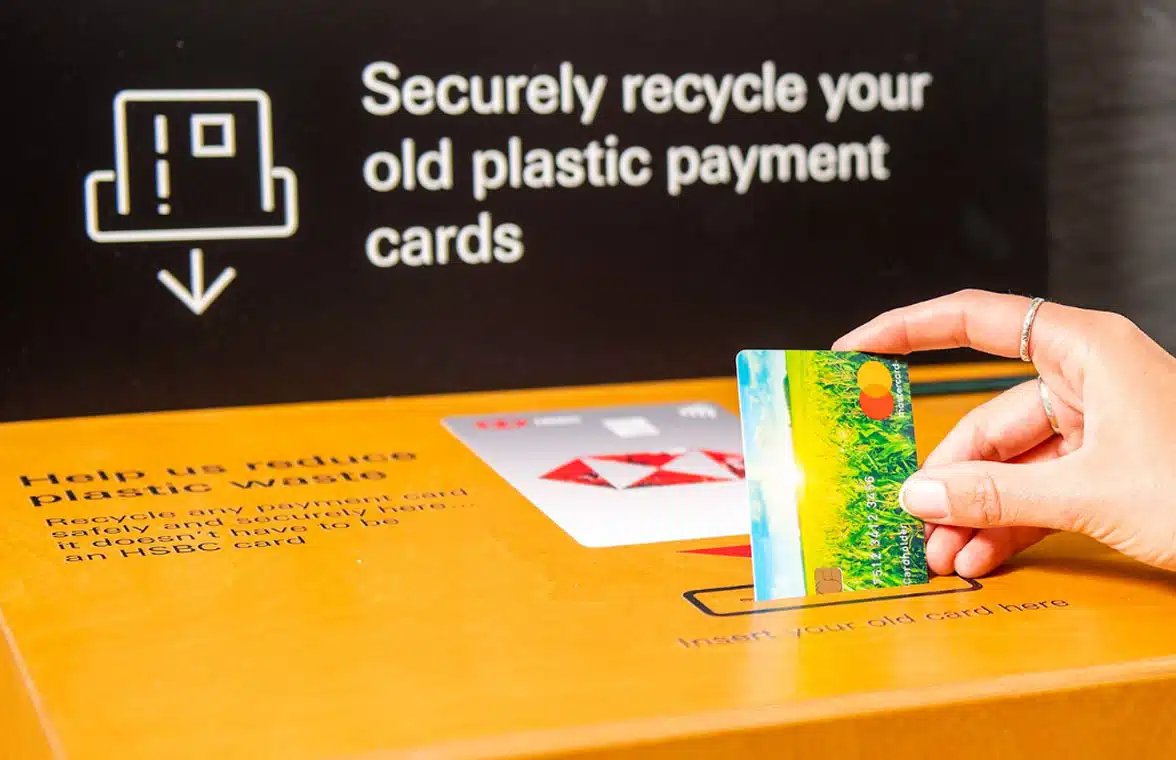
Mastercard and HSBC in the UK are piloting a card recycling system that the payments network hopes will become a blueprint for the global card industry.
In the pilot, cardholders can drop off any expired payment cards in secure, dedicated collection boxes located in HSBC bank branches.
“For additional peace of mind, the cards are shredded inside the collection box, ensuring no card information can be stolen and the built-in chip is destroyed,” Mastercard’s president of cyber & intelligence Ajay Bhalla says.
“The shredded waste is then shipped to our recycling partner. For the UK, this is TerraCycle, which has been tackling hard-to-recycle products, from toothpaste tubes to mascara wands to water filters to coffee pods, for more than 20 years. The shredded card waste is then separated and the plastic reformed into pellets and powders to be reused for other products.”
“Most of the 25bn cards in circulation today are made from first-use plastics like PVC that will not break down and decompose, and they are difficult to recycle because of the metals and other materials embedded within. As a result, the vast majority wind up in landfills already choked with plastics,” Bhalla adds.
“We see a future where all plastic cards can be recycled easily — at your bank, your corner store or your municipal recycling centre — to make a small but meaningful dent in the plastic pollution crisis,” he says.
“The innovation and collaboration that produced the payment cards we carry today can and should be harnessed to dispose of them in a secure and sustainable way.”
• Linxens VP Thomas Decker shared an in-depth analysis of the sustainable alternatives to today’s predominantly first-use PVC cards, including recycled PVC (rPVC), recycled PETG (rPETG), ocean plastic, biodegradable PLA plastic and wood, in a recent presentation for NFCW’s Contactless World Congress that is now available to view online.
Learn more about Linxens in the NFCW Expo.